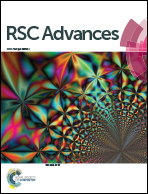A comparative study of the effects of different TiO2 supports toward CO2 electrochemical reduction on CuO/TiO2 electrode
Abstract
CuO-based electrodes possess vast potential in the field of CO2 electrochemical reduction. Meantime, TiO2 supports show the advantages of being non-toxic, low-cost and having high chemical stability, which render it an ideal electrocatalytic support with CuO. However, different morphologies and structures of TiO2 supports can be obtained through various methods, leading to the discrepant electrocatalytic properties of CuO/TiO2. In this paper, three supports, named dense TiO2, TiO2 nanotube and TiO2 nanofiber, were applied to synthesize CuO/TiO2 electrodes by thermal decomposition, and the performances of the electrocatalysts were studied. Results show that the main product of the three electrocatalysts was ethanol, but the electrochemical efficiency and reaction characteristics are obviously different. The liquid product of CuO/Dense TiO2 is pure ethanol, however, the current efficiency is rather low owing to the higher resistance of the TiO2 film. CuO/TiO2 nanotube shows high conductivity and ethanol can be synthesized at low overpotential with high current efficiency, but the gas products cannot be restricted. CuO/TiO2 nanofiber has a larger specific surface area and more active sites, which is beneficial for CO2 reduction, and the hydrogen evolution reaction can be evidently restricted. The yield of ethanol reaches up to 6.4 μmol cm−2 at −1.1 V (vs. SCE) after 5 h.



 Please wait while we load your content...
Please wait while we load your content...